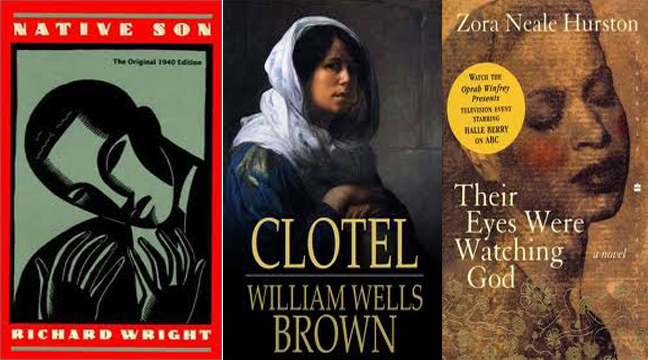100 Novels: Trend Analyses Project
 The Project on the History of Black Writing’s extensive collection of African American novels presents scholars with numerous opportunities to examine history, culture, and politics of black literary art. Over the last six months, members of HBW have gathered data on a group of 100 African-American-authored novels—from Williams Wells Brown’s Clotel; or, the President’s Daughter (1853) to Terry McMillan’s Getting to Happy (2010).
The Project on the History of Black Writing’s extensive collection of African American novels presents scholars with numerous opportunities to examine history, culture, and politics of black literary art. Over the last six months, members of HBW have gathered data on a group of 100 African-American-authored novels—from Williams Wells Brown’s Clotel; or, the President’s Daughter (1853) to Terry McMillan’s Getting to Happy (2010).
Collecting information on at least four dozen factors pertaining to the 100 novels and the lives of the authors has begun to reveal a wide range of fascinating commonalities and variations ranging from the months when the most major novelists are born and how many authors have received Guggeneim fellowships to the cities that have served as the most common settings for novels.
Our preliminary research findings have also led us to identify relationships between large numbers of books published over more than 150 years. For instance, a city like Chicago seems to be a popular setting for novels; the Windy City is featured in Nella Larsen’s Quicksand (1928), Richard Wright’s Native Son (1940), The Outsider (1953), and Lawd Today (1963), and Iceberg Slim’s Trick Baby (1967) and Mama Black Widow (1969). Novels that are adapted into movies seem to end up with several print editions and novel covers and highly developed Wikipedia pages. In addition, after 1980, there seems to be a strong correlation between novelists with M.F.A. degrees and novels that end up on The New York Times bestseller list.
 Over the course of the next few months, we will elaborate on these and other notable findings in blog entries and through a series of public exhibits at the University of Kansas known as “The Black Literary Suite.” Ideally, the writings and exhibits on trends in the publication of 100 African American novels will shed new light on the holdings in HBW’s novel collection and stimulate more conversations about what we can learn by studying a large number of black artistic compositions.
Over the course of the next few months, we will elaborate on these and other notable findings in blog entries and through a series of public exhibits at the University of Kansas known as “The Black Literary Suite.” Ideally, the writings and exhibits on trends in the publication of 100 African American novels will shed new light on the holdings in HBW’s novel collection and stimulate more conversations about what we can learn by studying a large number of black artistic compositions.